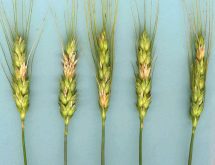The bull market may be over for some crops in Canada but the longer-term outlook for pulse crops remains strong, according to Marlene Boersch, a partner in Mercantile Consulting Venture in Winnipeg. Boersch was speaking at the Canadian Wheat Board’s annual GrainWorld conference in Winnipeg on Feb. 23.
Relative to other major Canadian crops, the return-per-acre outlook for pulses remains “positive” for producers, Boersch said.
Kabuli chickpeas, red lentils, green lentils and yellow peas have the highest anticipated returns of all of major crops in Canada for 2009, Boersch noted.
Read Also

Mazergroup’s Bob Mazer dies
Mazergroup’s Bob Mazer, who helped grow his family’s company into a string of farm equipment dealerships and the main dealer for New Holland machinery in Saskatchewan and Manitoba, died July 6 from cancer.
Globally, the long-term market outlook for pulse crops is also strong. World pulse and special crop output is increasing slowly, due to yield problems, while at the same time overall consumption is rising due to population growth in developing countries, she said. Import volumes are increasing as output by major global producers is outpaced by population growth.
Also, in India, the world’s largest consumer of pulse crops, grain legumes are gaining ground in terms of production and pulse crops are struggling, Boersch added.
She reminded the conference participants, however, that demand for most pulse and special crops is inelastic, meaning that an oversupply leads to a depression in prices. Conversely, an undersupply guarantees high prices.
Boersch pegged 2009-10 Canadian lentil acreage at 1.832 million acres, up from 1.559 million acres in 2008-09. Total Canadian lentil output was forecast at 1.008 million tonnes, compared to 0.935 million tonnes in 2008-09 and 2009-10 carry-out was pegged at 0.196 million tonnes. That compares to an estimated 2008-09 carry-out of 0.108 million tonnes. Canadian lentil exports for 2009-10 were forecast at 0.810 million tonnes, up 0.780 million tonnes in 2008-09.
While Canadian lentil acreage is expected to climb 18 per cent, Boersch said the market will be able to absorb the added supply due to the low anticipated 2008-09 carry-out.
A minor reduction in Canadian lentils prices during 2009-10 is expected but Boersch said values should rise later in the year as stocks are drawn down.
Globally, output for 2009-10 by the top lentil producers was pegged at 2.588 million tonnes, compared to an estimated 2.347 million tons during the 2008-09 crop year.
Canadian 2009-10 pea acreage was forecast at 3.795 million acres, down roughly five per cent from 3.995 in 2008-09. Pea production is expected to total 3.369 million tonnes, down from 3.571 in 2008-09, while the carry-out was pegged at 0.648 million tonnes, down from an estimated 0.670 million tonnes for the current crop year. Boersch forecast Canadian pea exports at 2.200 million tonnes, unchanged from the anticipated 2008-09 level.
Pea yields are expected to be in line with the five-year average and pea prices will likely hover around the $6-a-bushel mark for most of the coming crop year, she said.
Pea output by the major world producers in 2009-10 was forecast at 6.409 million tonnes, down slightly from an estimated 6.507 million tonnes in 2008-09.
A key factor for the global pea market outlook will depend on how many peas are purchased by India to be blended into chickpea flour, according to Boersch.
Finally, Canadian canary seed acreage for 2009-10 was pegged in the presentation at 0.446 million acres compared to 0.415 million acres in 2008-09. Canary seed production was forecast at 0.189 million tonnes, up from the current level of 0.197 million tonnes while the 2009-10 canary seed carry-out was forecast at 0.038 million tonnes. That compares to the estimated 2008-09 carry-out level of 0.052 million tonnes.


















